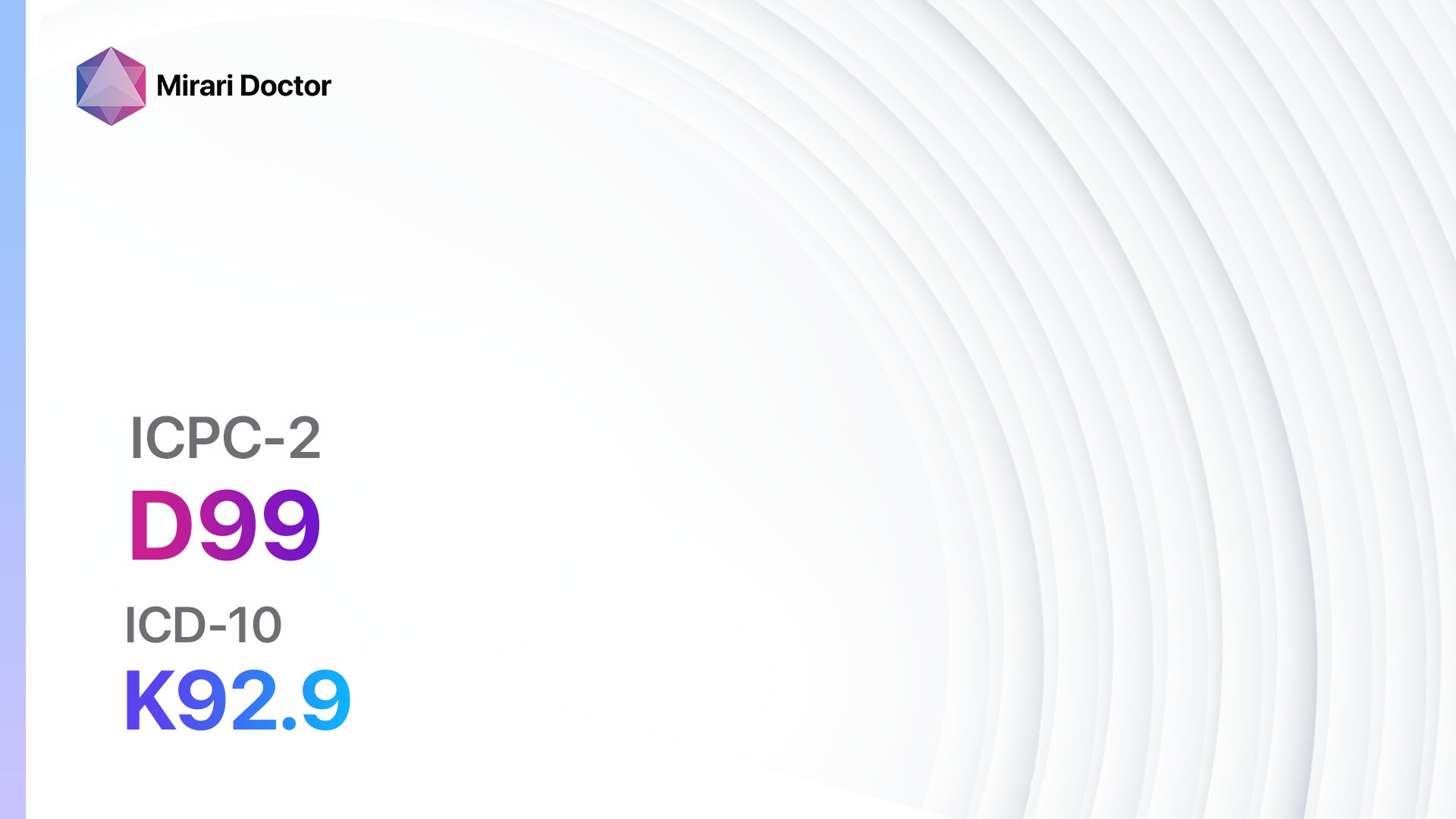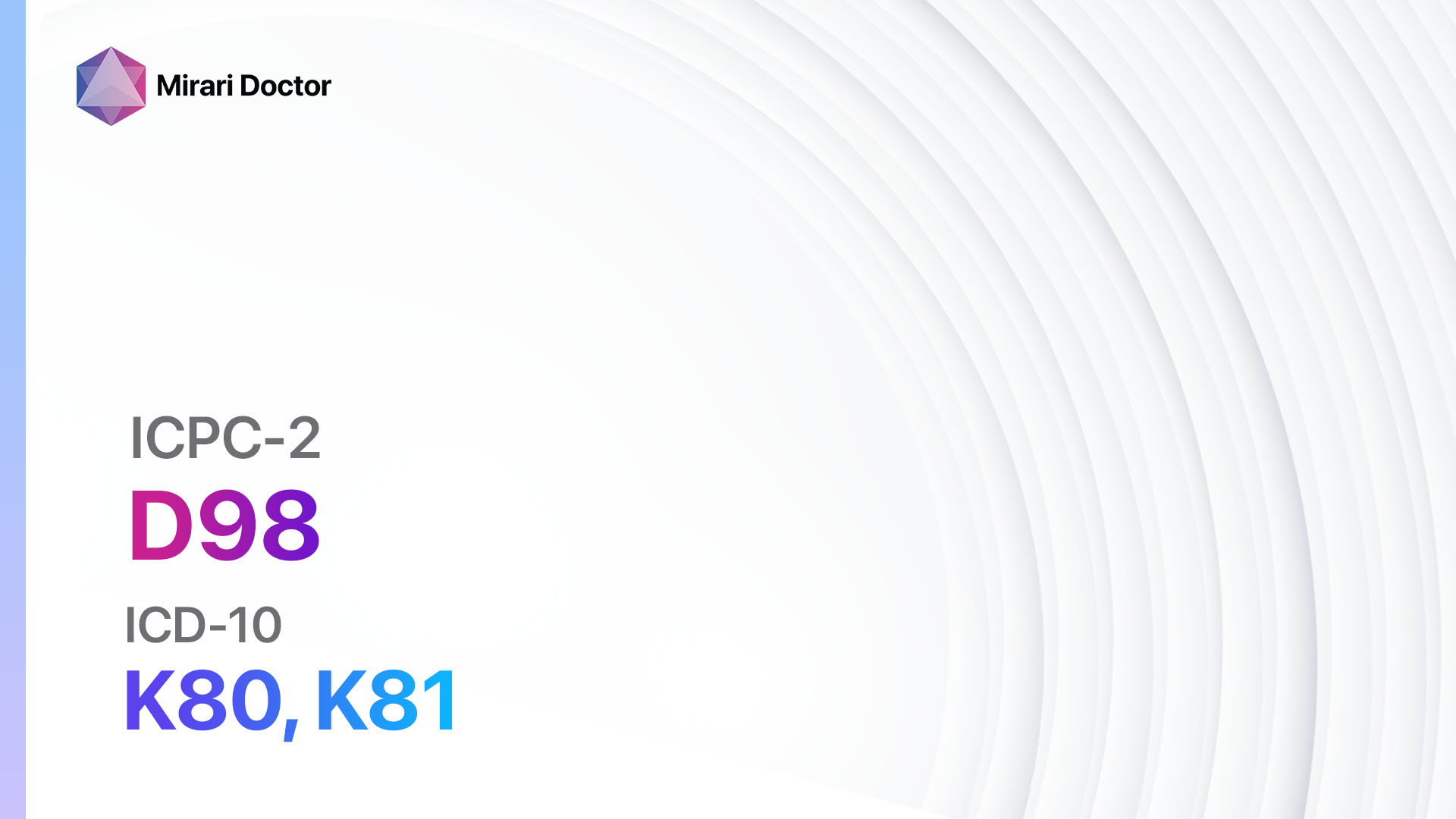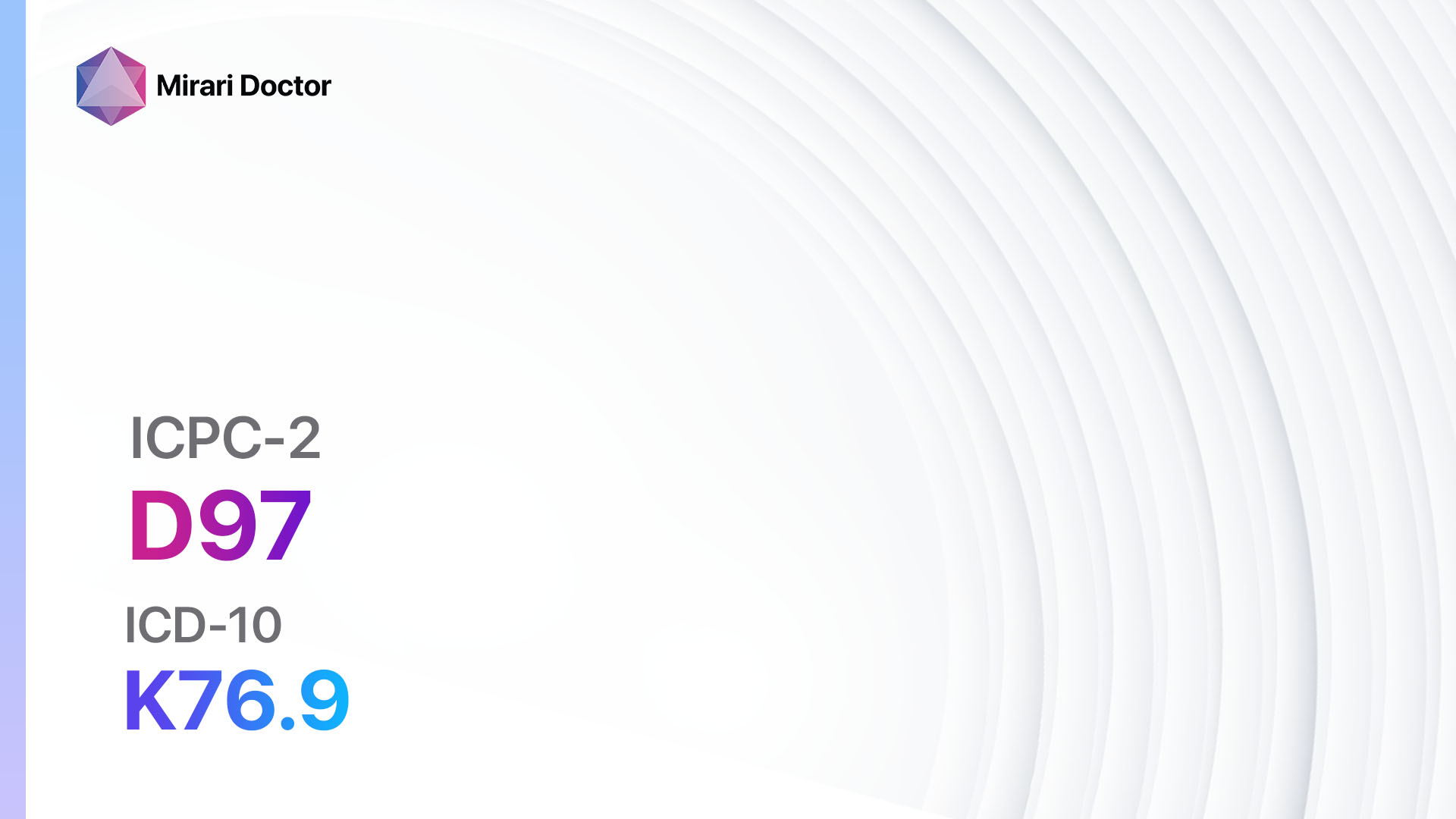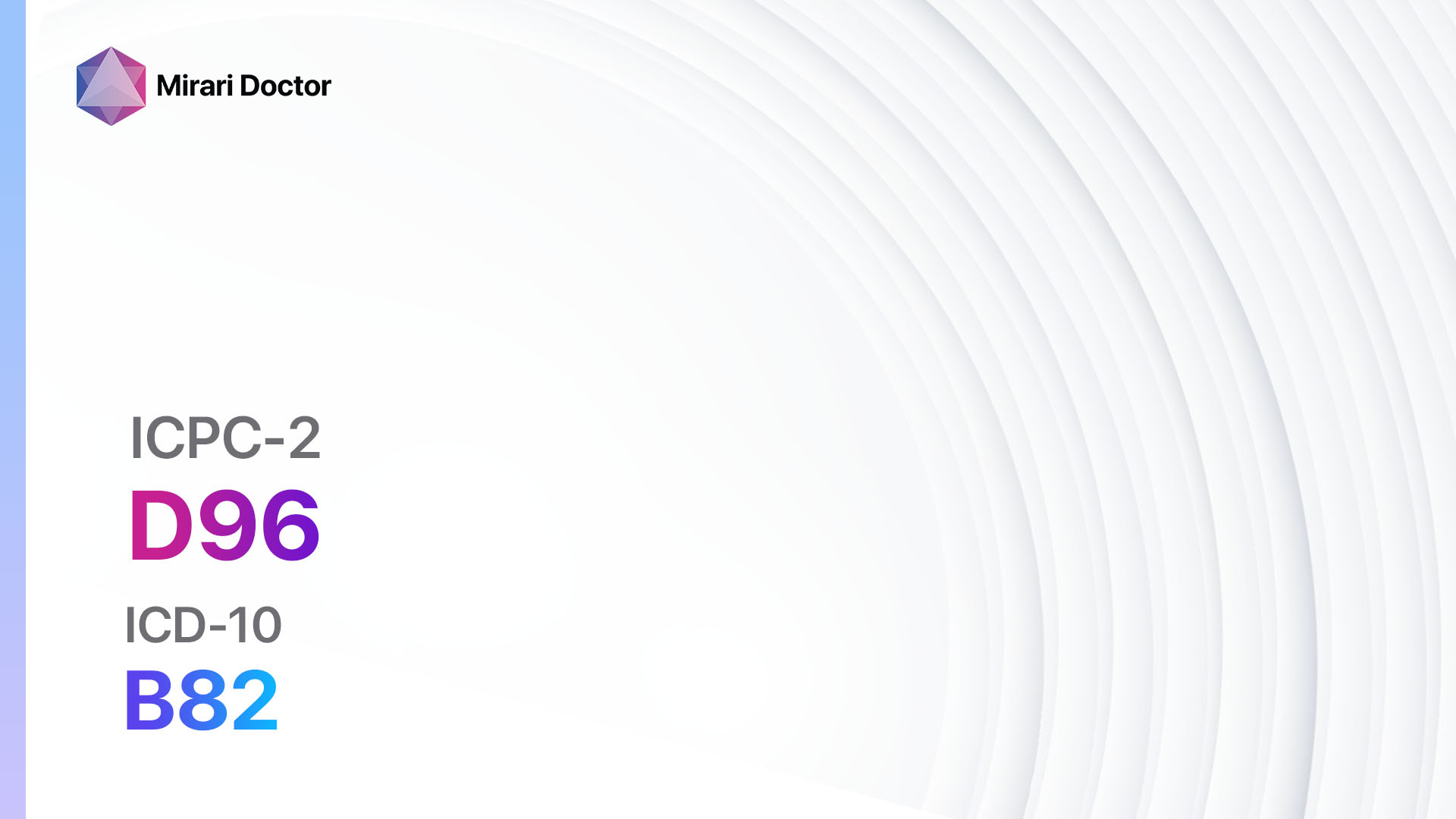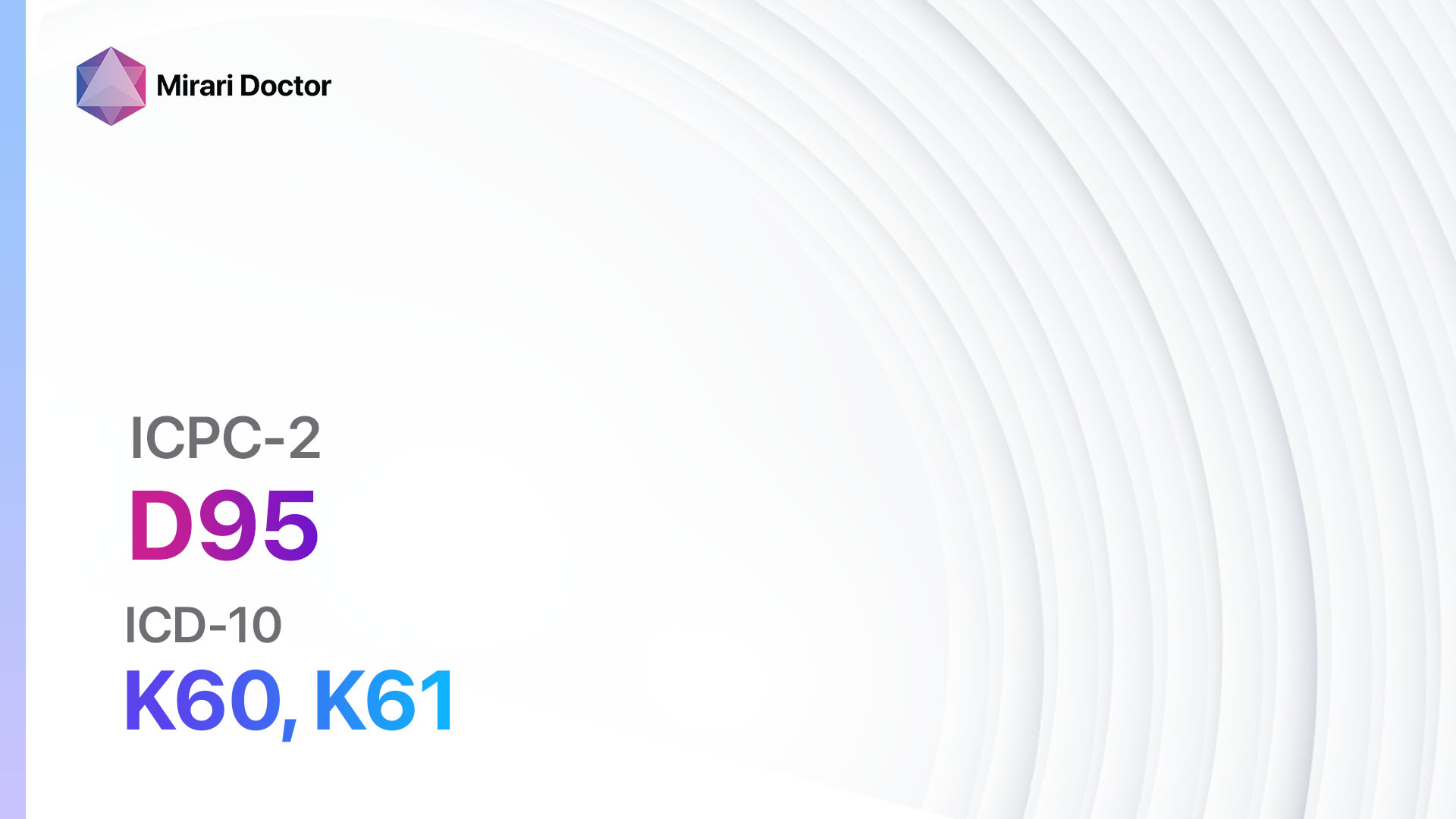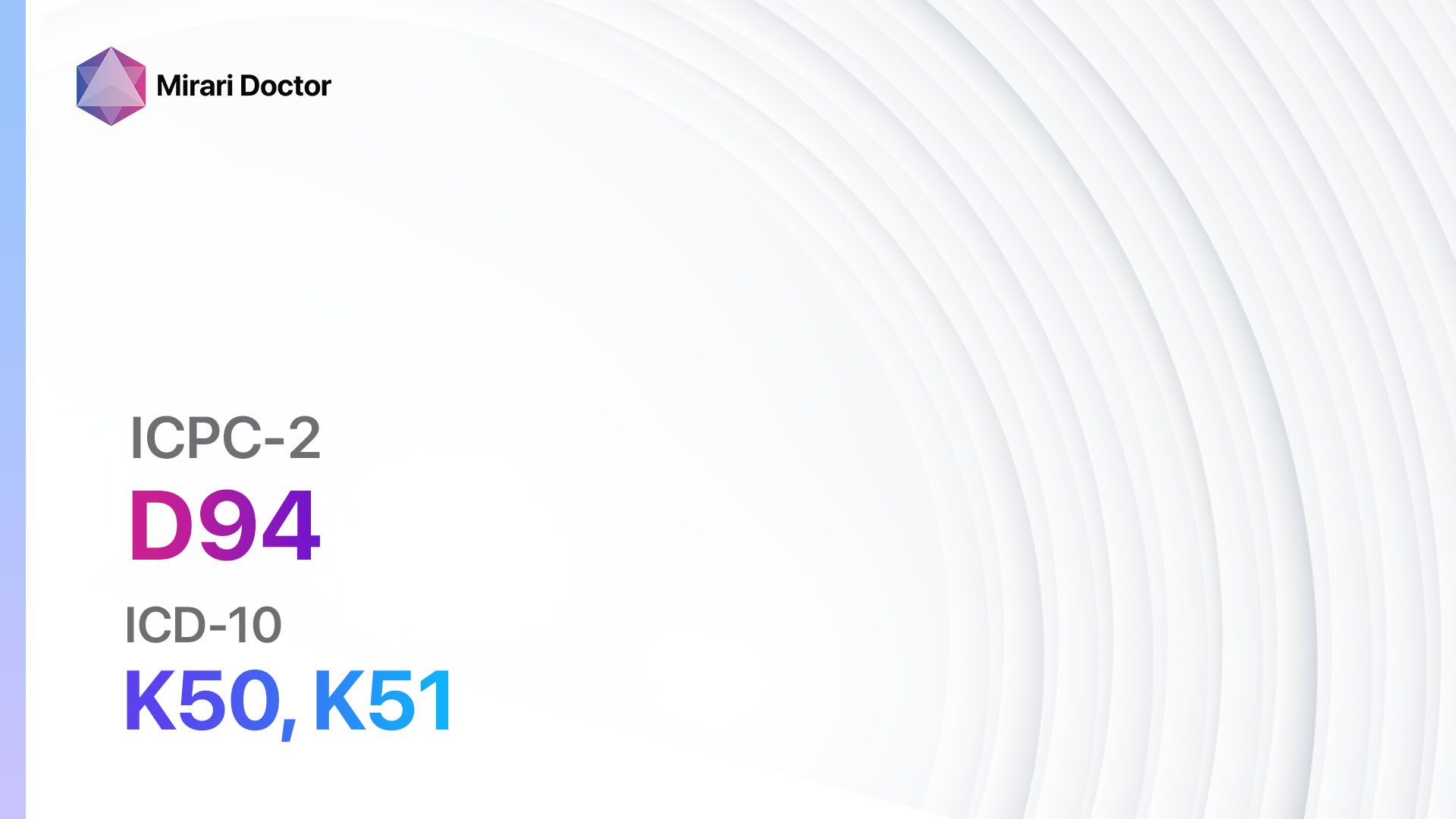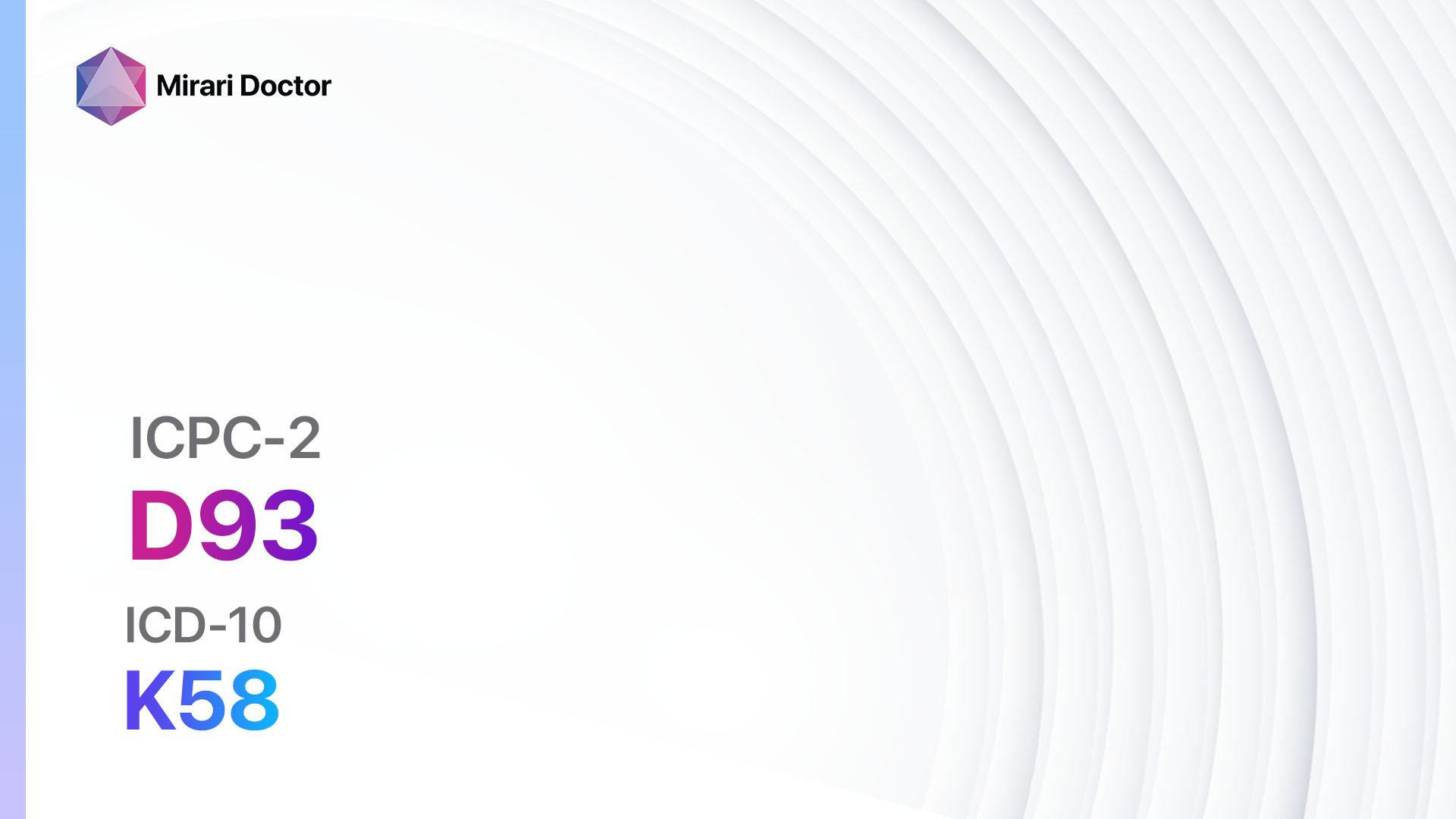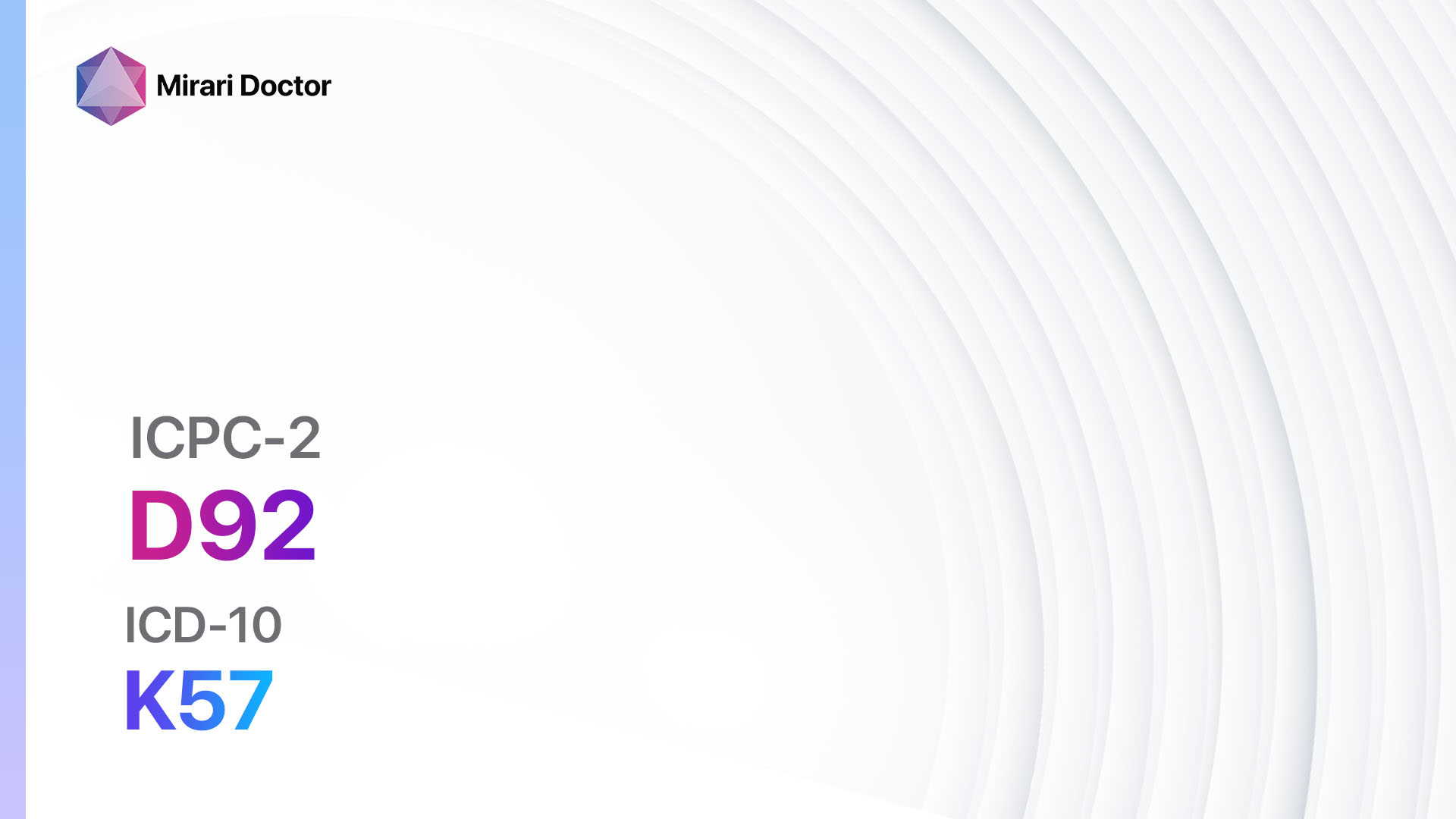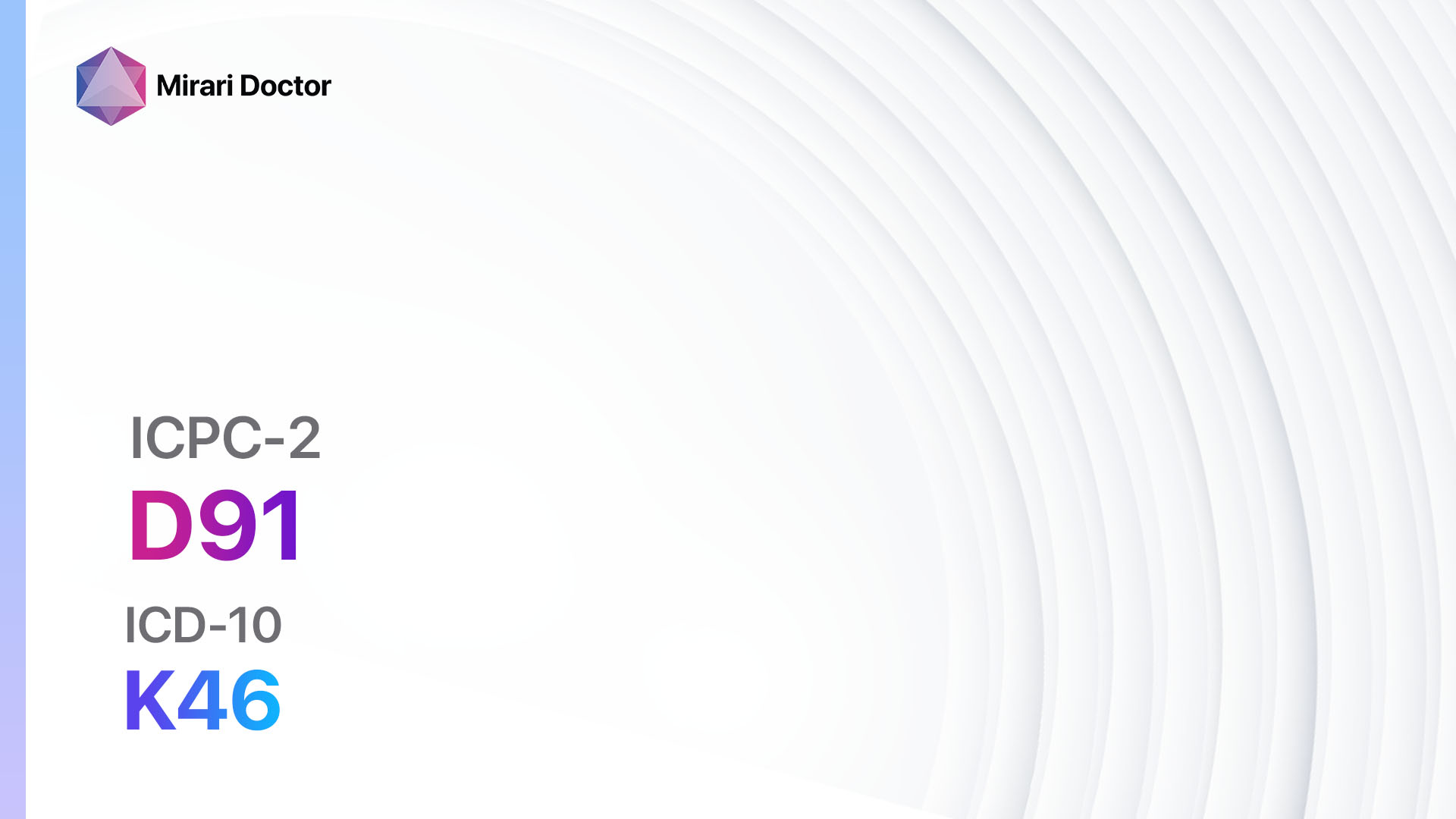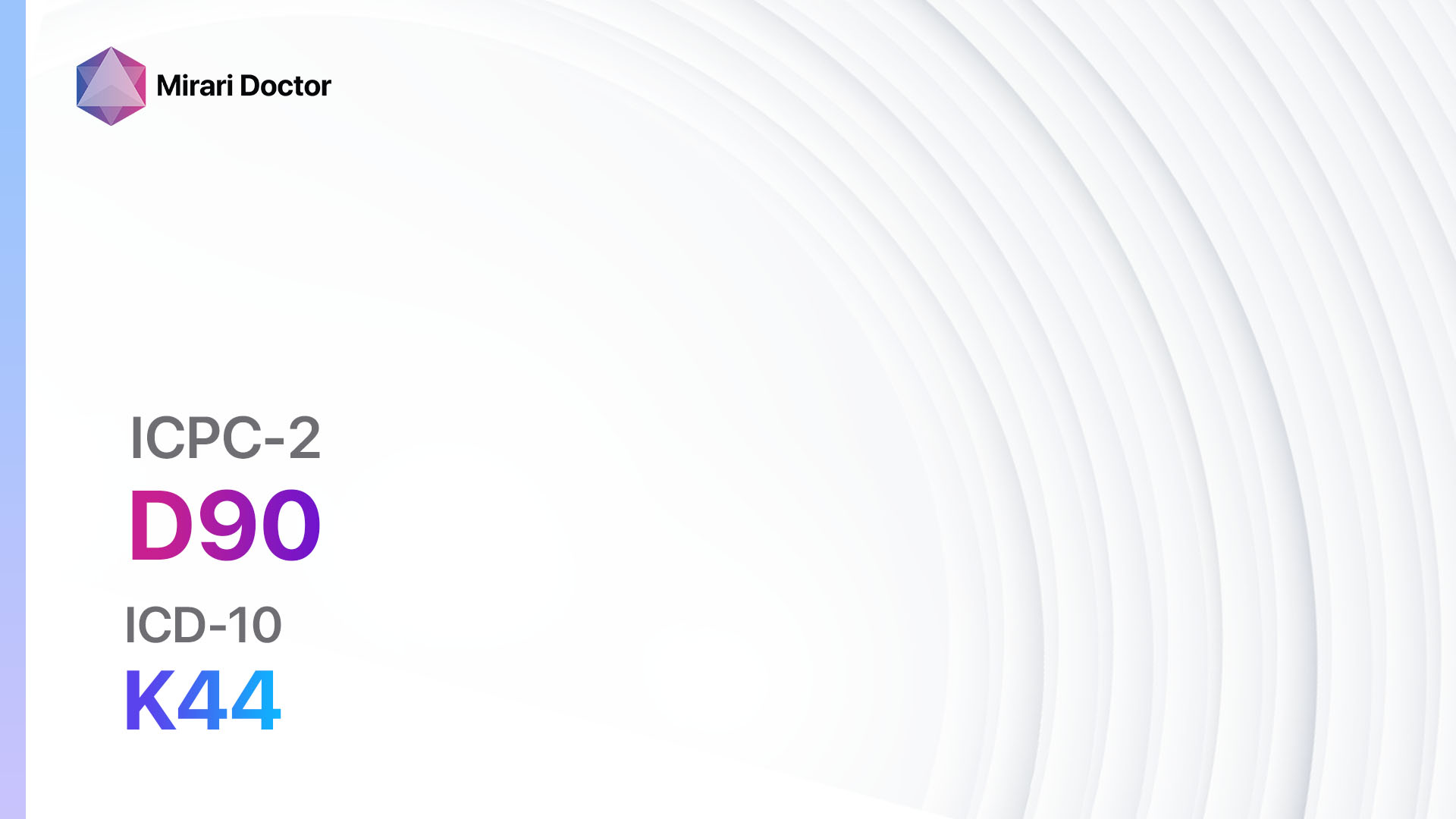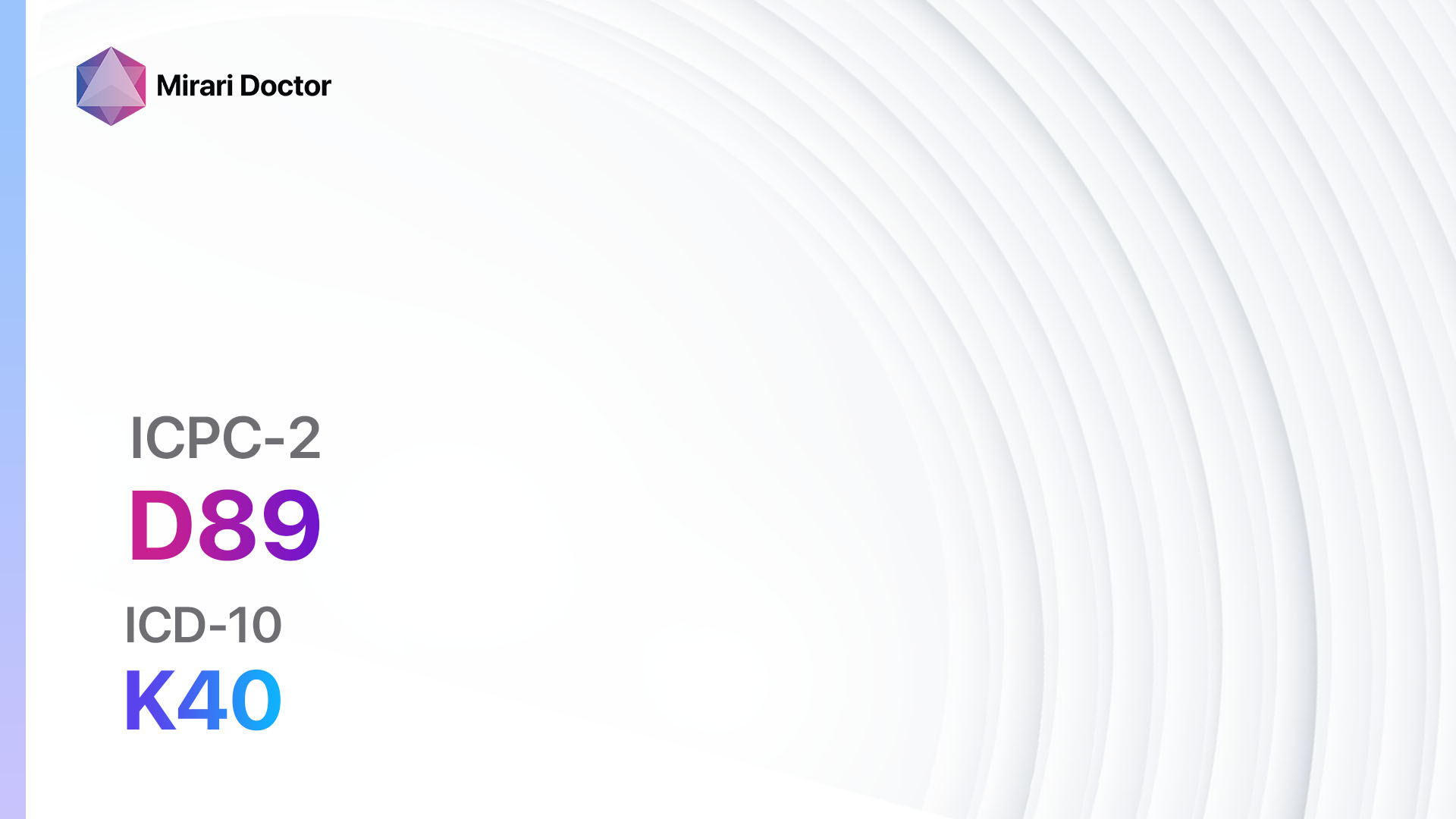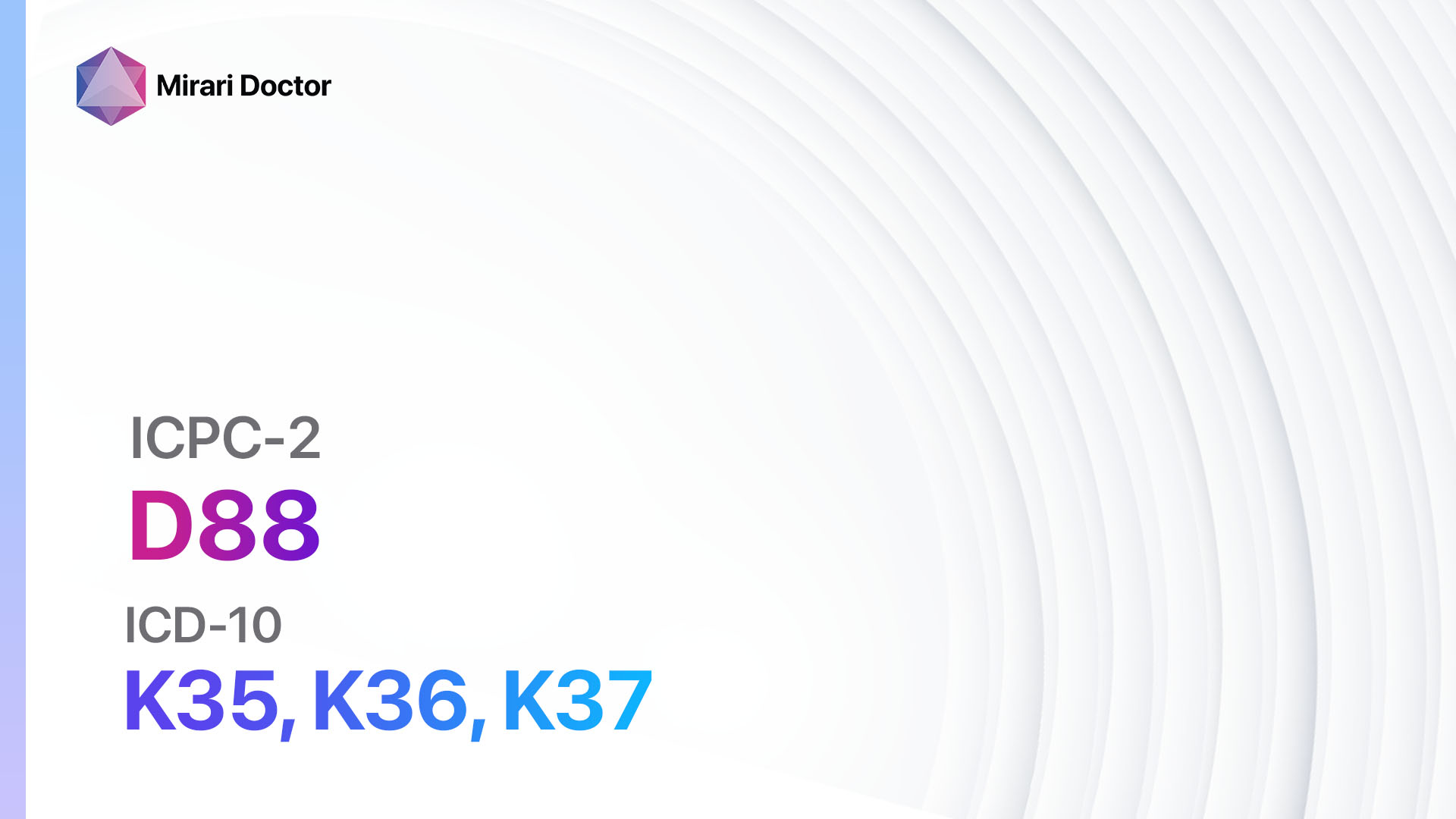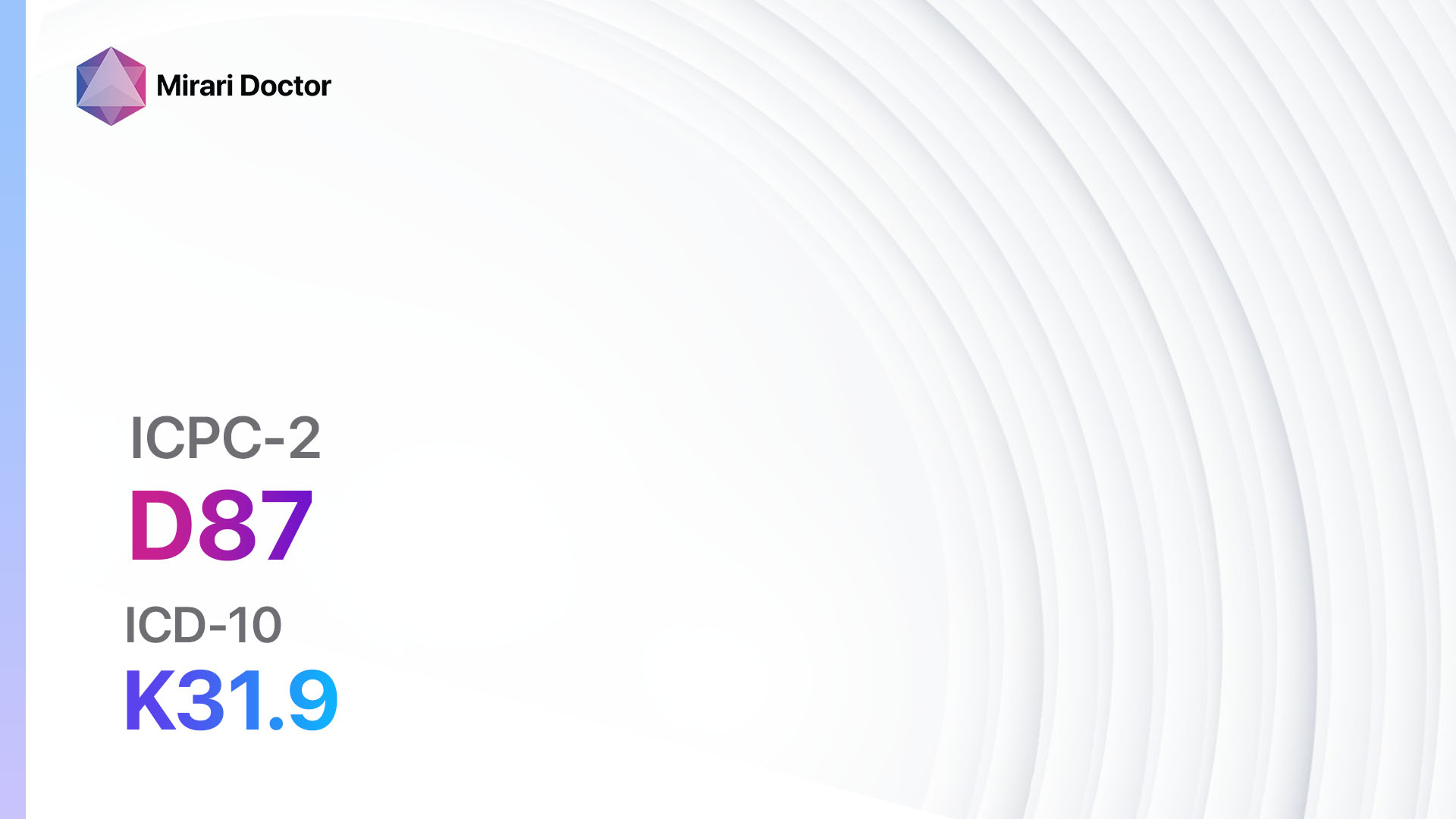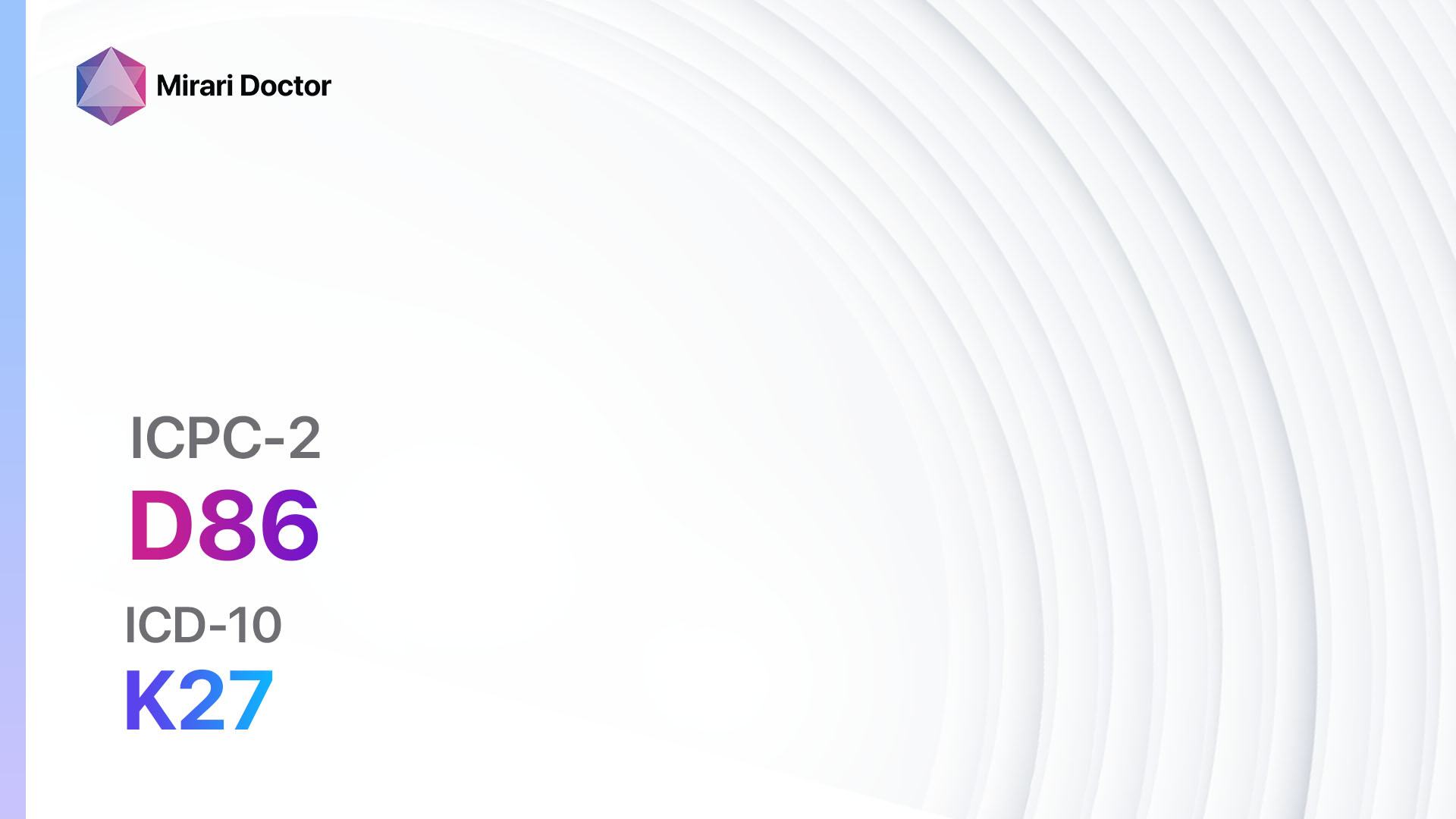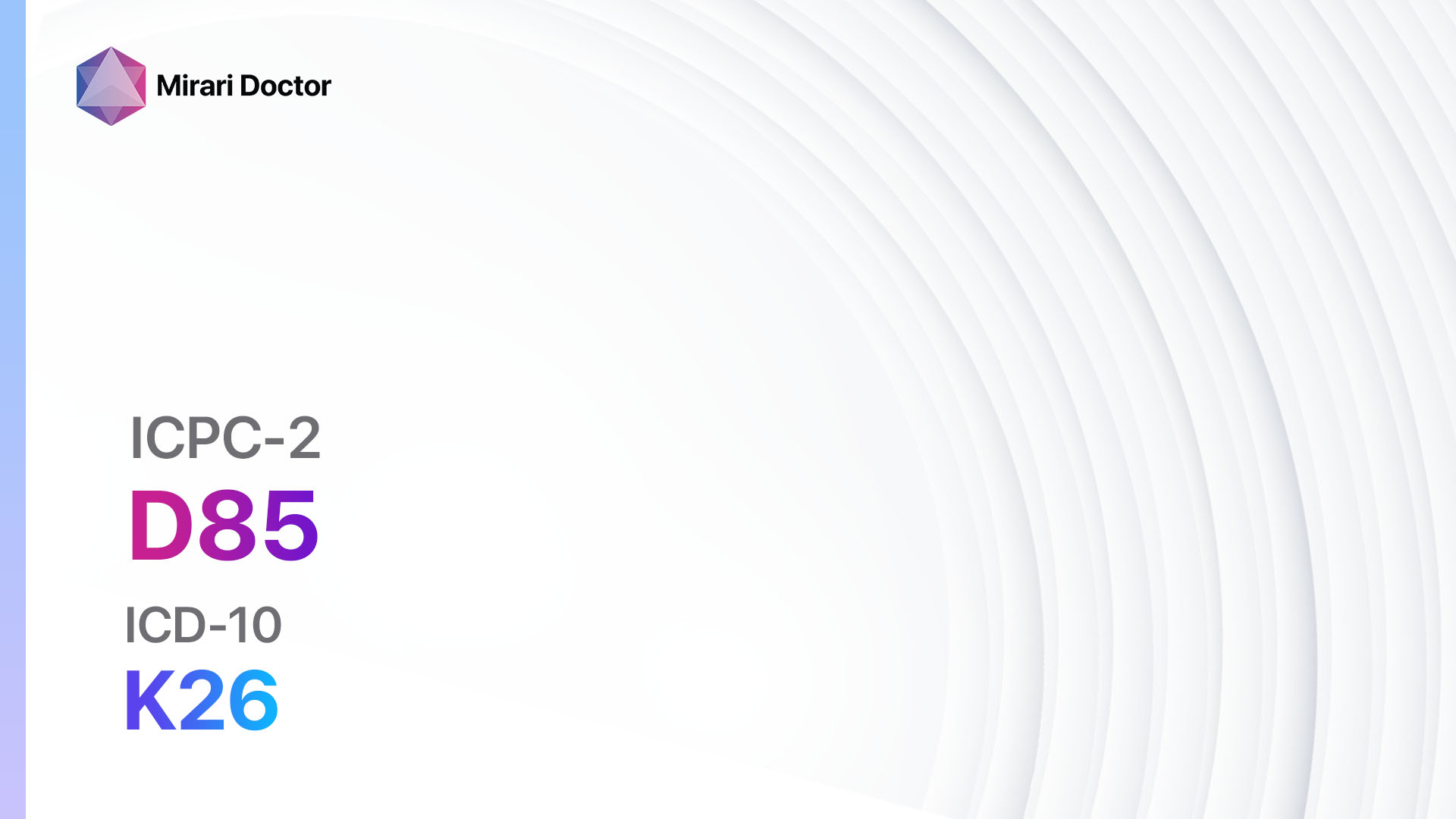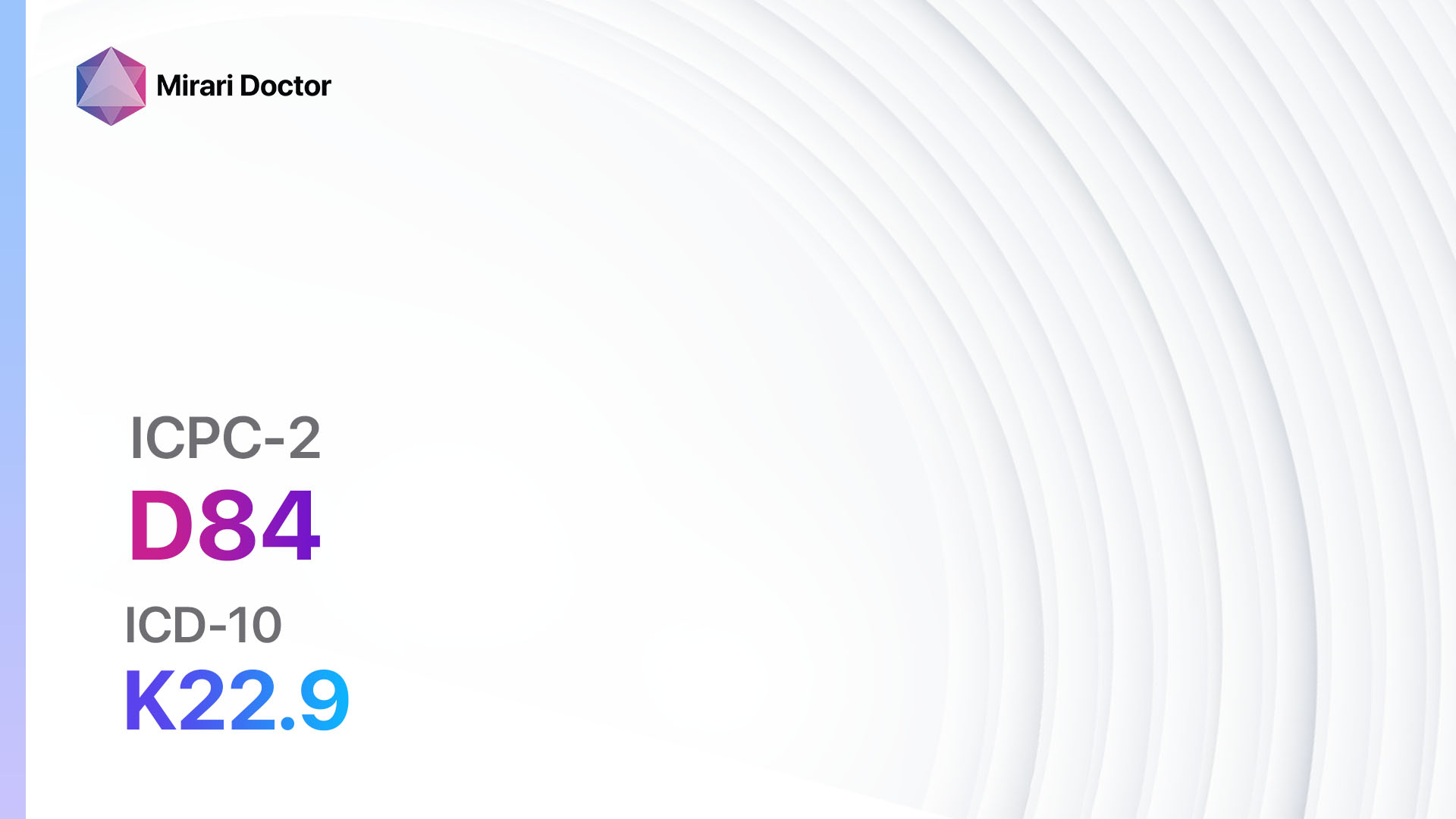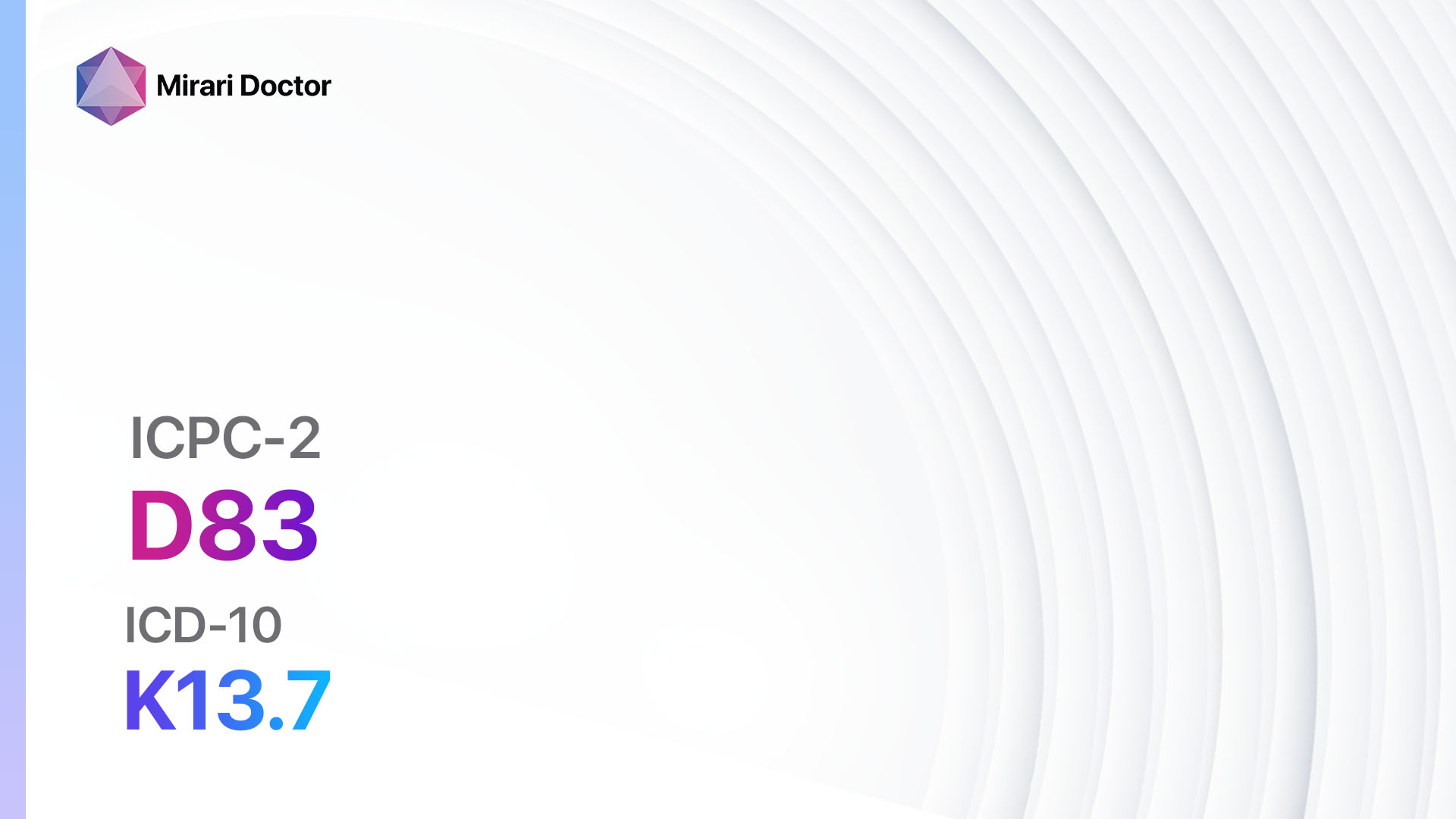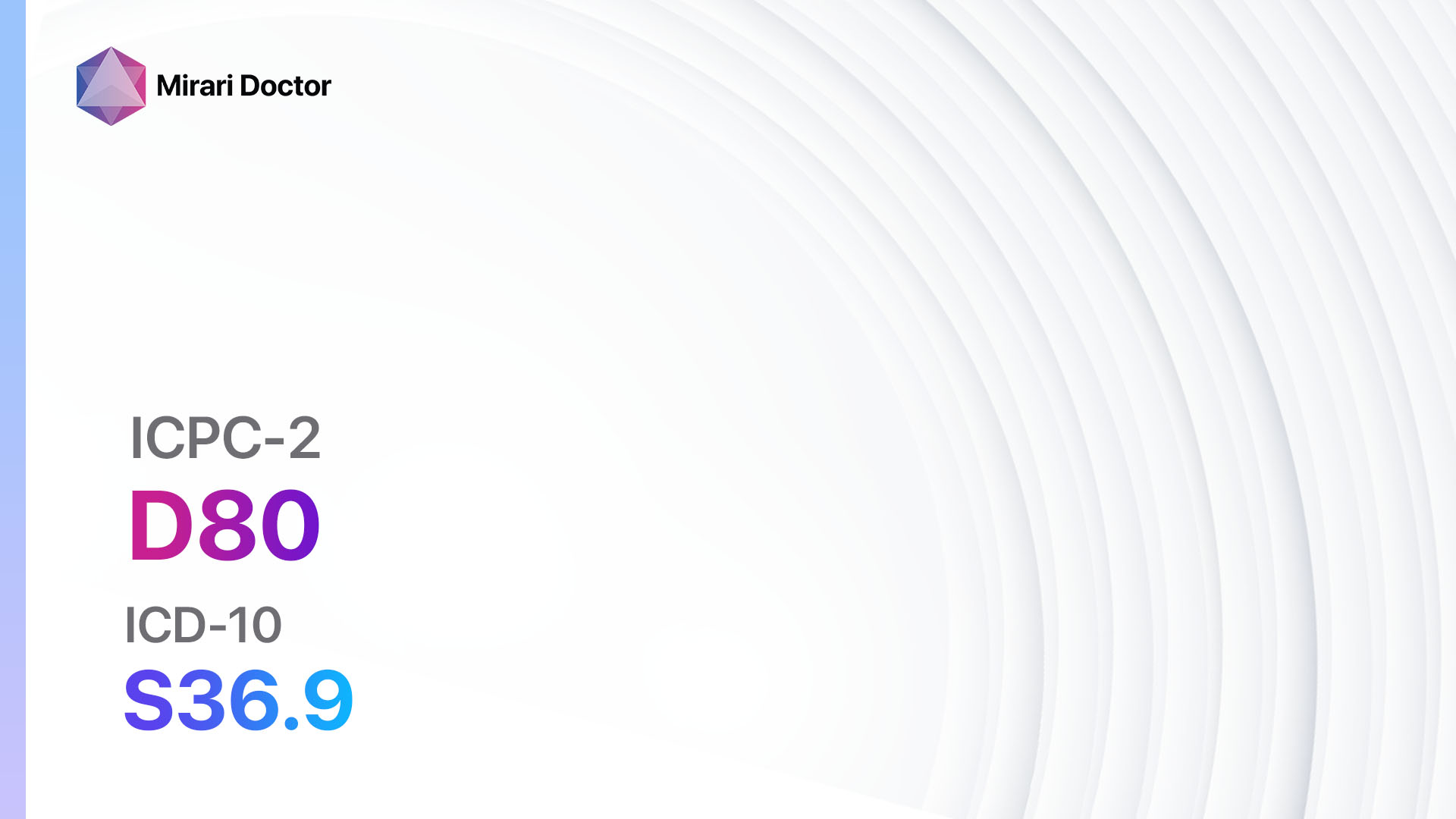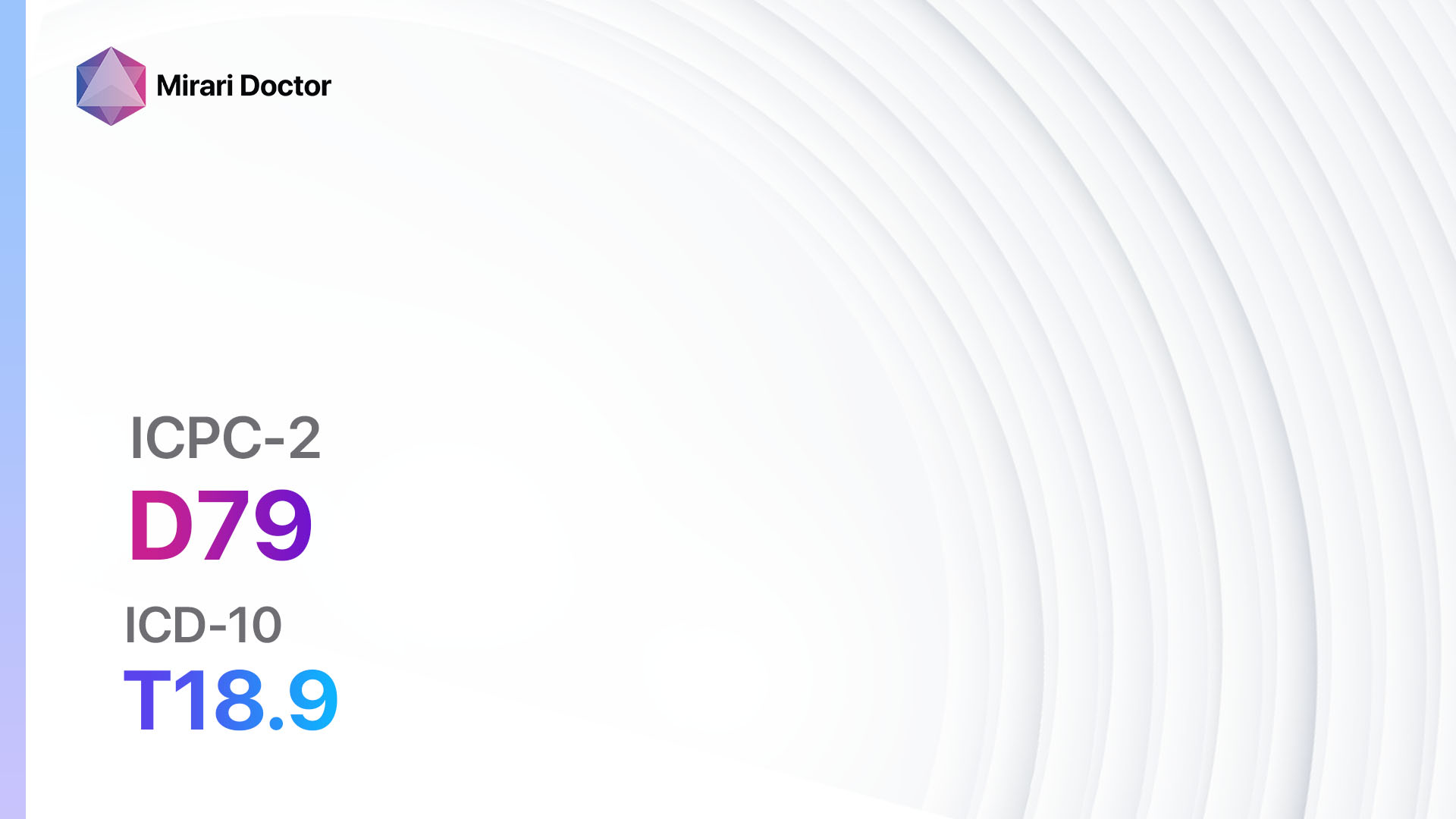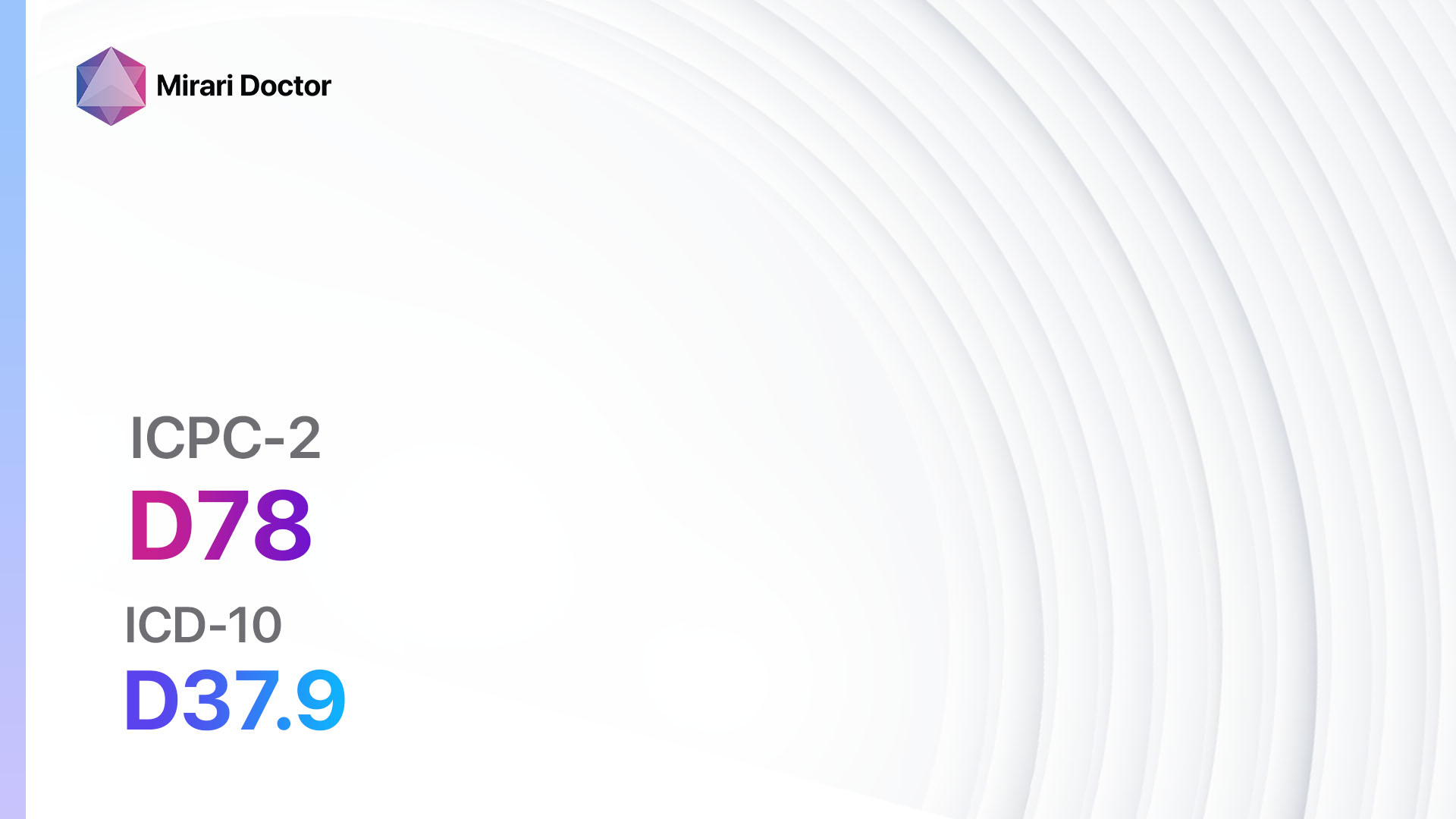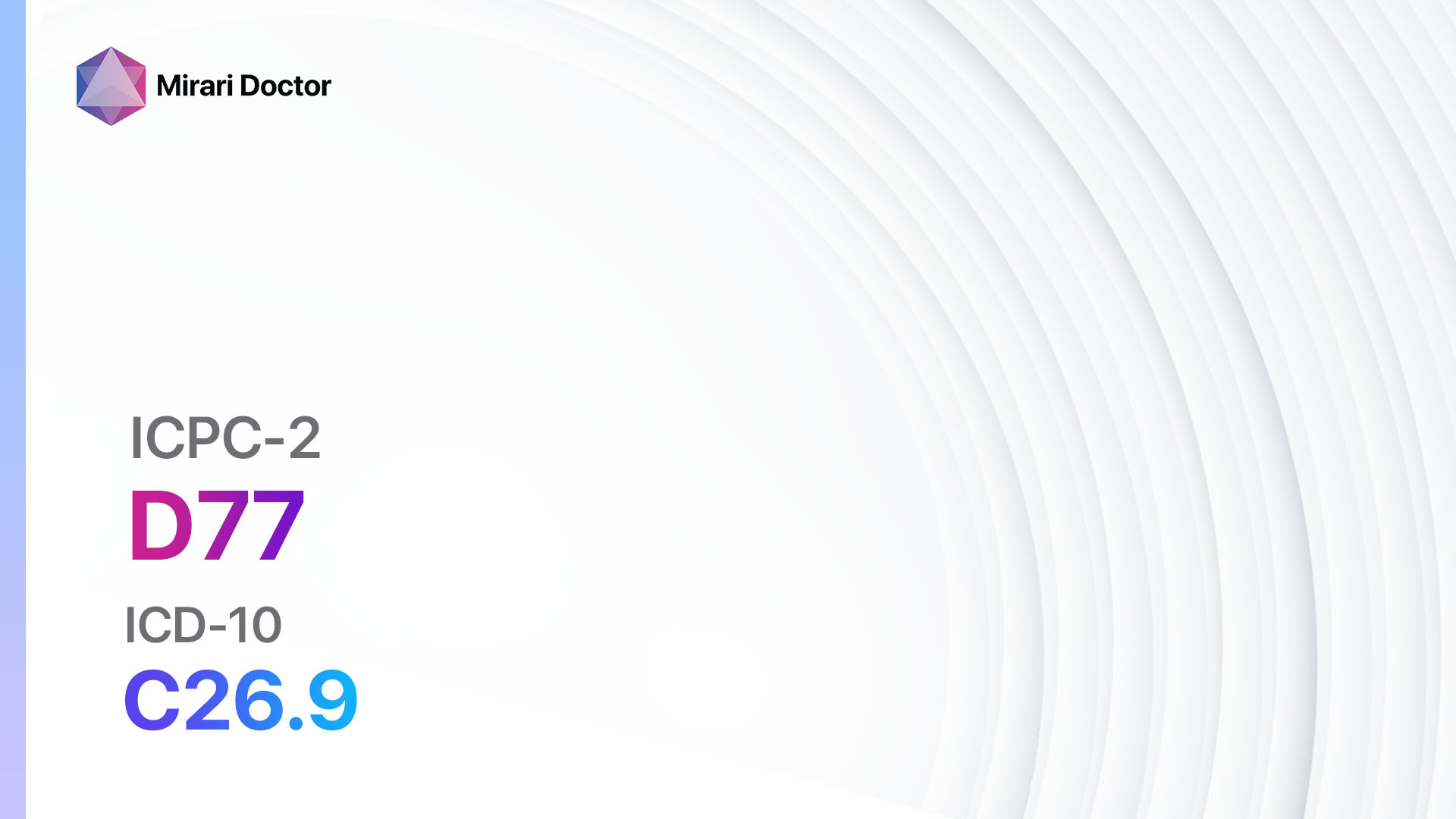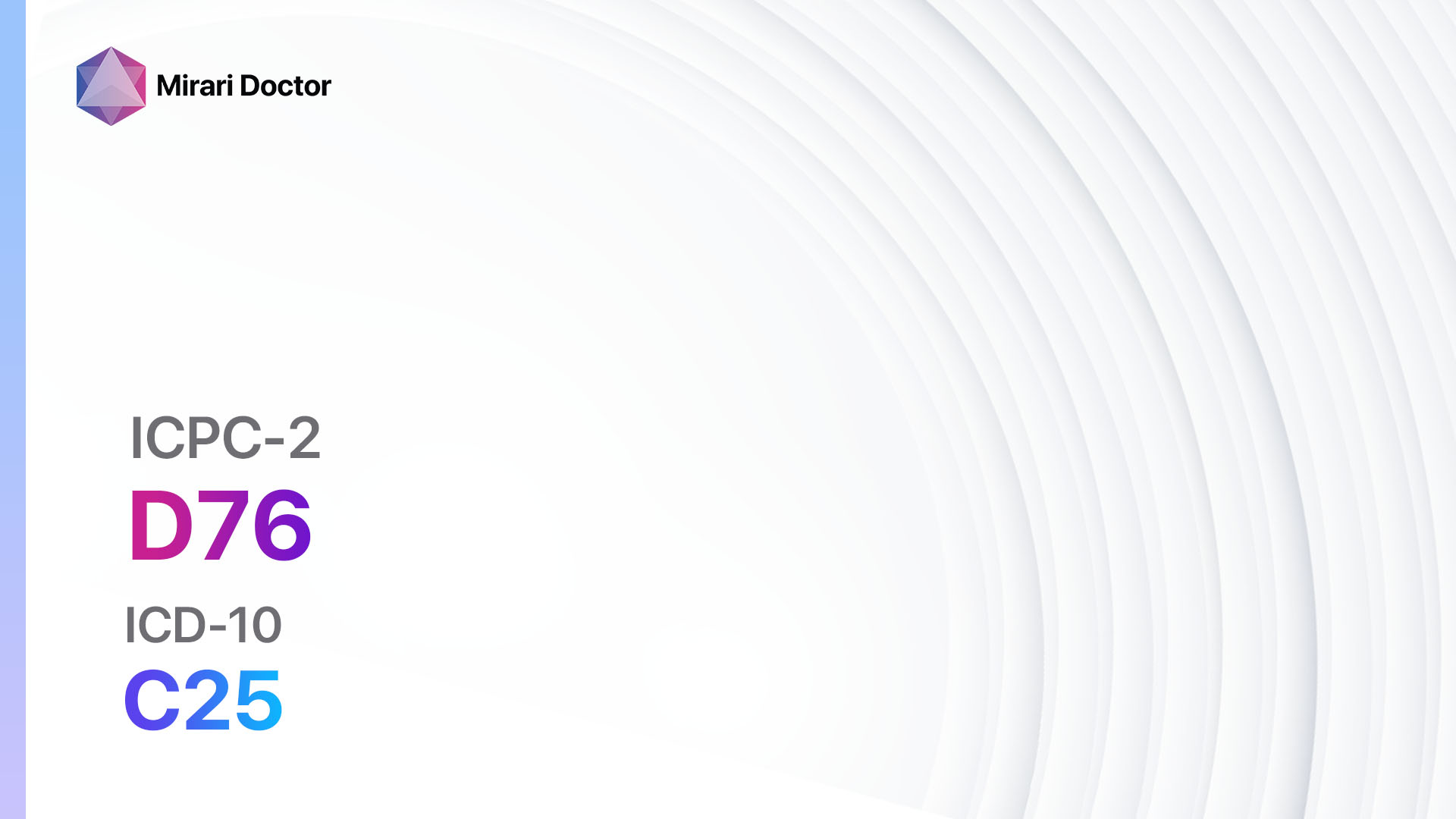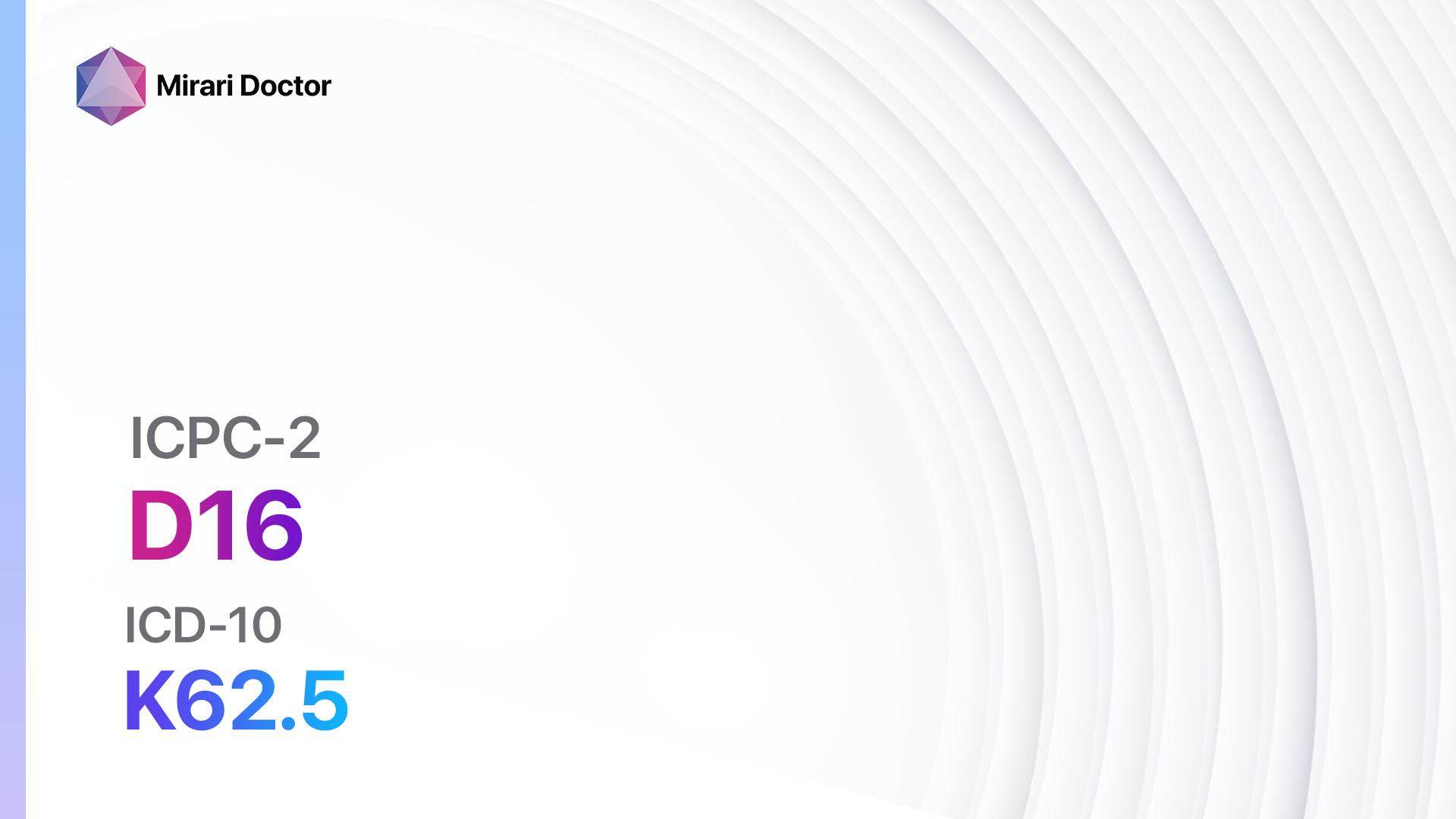
Introduction
Rectal bleeding refers to the passage of blood through the rectum and can be a concerning symptom that may indicate an underlying medical condition[1]. This guide aims to provide a comprehensive approach to the diagnosis and management of rectal bleeding.
Codes
Symptoms
- Bright red blood in the stool
- Blood on toilet paper or in the toilet bowl after a bowel movement
- Dark, tarry stools (melena)
- Abdominal pain or discomfort
- Changes in bowel habits (diarrhea or constipation)
- Fatigue or weakness[4]
Causes
Rectal bleeding can be caused by various factors, including:
- Hemorrhoids: Swollen blood vessels in the rectum or anus.
- Anal fissures: Small tears in the lining of the anus.
- Diverticulosis: Small pouches that develop in the colon.
- Inflammatory bowel disease (IBD): Conditions like Crohn’s disease or ulcerative colitis.
- Colorectal polyps or cancer: Abnormal growths in the colon or rectum.
- Gastrointestinal bleeding: Bleeding from the upper digestive tract that can present as rectal bleeding.
- Anal or rectal infections: Infections in the anal or rectal area.
- Other causes: Medications, radiation therapy, trauma, or systemic conditions.[5]
Diagnostic Steps
Medical History
- Gather information about the patient’s symptoms, including the duration, frequency, and severity of rectal bleeding.
- Ask about any associated symptoms, such as abdominal pain, changes in bowel habits, or weight loss.
- Inquire about the presence of risk factors, such as a family history of colorectal cancer, age over 50, or a personal history of inflammatory bowel disease.
- Assess the patient’s medical history, including any previous diagnoses or treatments related to gastrointestinal conditions.[6]
Physical Examination
- Perform a thorough physical examination, including a digital rectal examination (DRE), to assess for any abnormalities in the rectum or anus.
- Look for signs of hemorrhoids, anal fissures, or other visible lesions.
- Check for signs of anemia, such as pale skin or fatigue.
- Evaluate the abdomen for tenderness or masses.[7]
Laboratory Tests
- Complete blood count (CBC): To assess for anemia or signs of infection.
- Coagulation profile: To evaluate the blood’s ability to clot.
- Liver function tests: To assess liver health and rule out liver disease as a cause of bleeding.
- Stool tests: To check for the presence of blood, infections, or other abnormalities.[8]
Diagnostic Imaging
- Colonoscopy: A procedure that allows visualization of the entire colon and rectum to identify any abnormalities, such as polyps or tumors.
- Flexible sigmoidoscopy: Similar to a colonoscopy but focuses on the lower part of the colon and rectum.
- Barium enema: A special X-ray examination that provides detailed images of the colon and rectum.
- CT scan or MRI: Imaging modalities that can provide detailed images of the abdomen and pelvis to identify potential sources of bleeding.[9]
Other Tests
- Endoscopy: A procedure that uses a thin, flexible tube with a camera to visualize the upper digestive tract and identify potential sources of bleeding.
- Angiography: A procedure that uses contrast dye and X-rays to visualize blood vessels and identify potential sources of bleeding.
- Capsule endoscopy: A procedure that involves swallowing a small capsule with a camera to visualize the small intestine and identify potential sources of bleeding.[10]
Follow-up and Patient Education
- Schedule follow-up appointments to monitor the patient’s progress and response to treatment.
- Provide education on the importance of adhering to prescribed medications and lifestyle modifications.
- Encourage the patient to report any changes in symptoms or new concerns.
Possible Interventions
Traditional Interventions
Medications:
Top 5 drugs for rectal bleeding:
- Topical corticosteroids (e.g., hydrocortisone cream):
- Cost: $5-$20 per tube.
- Contraindications: Hypersensitivity to corticosteroids.
- Side effects: Skin thinning, irritation.
- Severe side effects: None reported.
- Drug interactions: None reported.
- Warning: Prolonged use may lead to skin atrophy.
- Fiber supplements (e.g., psyllium):
- Cost: $10-$20 per bottle.
- Contraindications: Intestinal obstruction.
- Side effects: Bloating, gas.
- Severe side effects: None reported.
- Drug interactions: None reported.
- Warning: Adequate fluid intake is necessary.
- Antibiotics (e.g., metronidazole):
- Cost: $10-$50 per course.
- Contraindications: Hypersensitivity to metronidazole.
- Side effects: Nausea, metallic taste.
- Severe side effects: Seizures, peripheral neuropathy.
- Drug interactions: Alcohol, warfarin.
- Warning: Avoid alcohol during treatment.
- Antidiarrheal agents (e.g., loperamide):
- Cost: $5-$15 per box.
- Contraindications: Severe abdominal pain, bloody diarrhea.
- Side effects: Constipation, drowsiness.
- Severe side effects: None reported.
- Drug interactions: None reported.
- Warning: Do not exceed recommended dosage.
- Proton pump inhibitors (e.g., omeprazole):
- Cost: $10-$30 per box.
- Contraindications: Hypersensitivity to proton pump inhibitors.
- Side effects: Headache, diarrhea.
- Severe side effects: Increased risk of fractures, Clostridium difficile infection.
- Drug interactions: Clopidogrel, methotrexate.
- Warning: Long-term use may increase the risk of certain infections.
Alternative Drugs:
- Aminosalicylates (e.g., mesalamine): Used for the treatment of inflammatory bowel disease.
- Antispasmodics (e.g., dicyclomine): May help relieve abdominal pain and cramping.
- Antidepressants (e.g., amitriptyline): Can be used to manage chronic pain associated with rectal bleeding.
- Immunosuppressants (e.g., azathioprine): Used in the treatment of inflammatory bowel disease.
- Anticoagulants (e.g., warfarin): May be prescribed if rectal bleeding is due to a blood clotting disorder.
Surgical Procedures:
- Hemorrhoidectomy: Surgical removal of hemorrhoids. Cost: $3,000-$10,000.
- Sphincterotomy: Surgical procedure to treat anal fissures. Cost: $2,000-$8,000.
- Polypectomy: Removal of colorectal polyps. Cost: $3,000-$10,000.
- Colectomy: Surgical removal of part or all of the colon. Cost: $10,000-$30,000.
- Colostomy: Surgical creation of an opening in the abdominal wall to divert stool. Cost: $5,000-$15,000.
Alternative Interventions
- Acupuncture: May help improve blood flow and reduce pain. Cost: $60-$120 per session.
- Chelation therapy: Controversial treatment involving the administration of chelating agents to remove heavy metals from the body. Cost: $75-$150 per session.
- Hyperbaric oxygen therapy: Involves breathing pure oxygen in a pressurized chamber to increase oxygen delivery to tissues. Cost: $200-$300 per session.
- Herbal supplements: Some herbs, such as aloe vera or witch hazel, may have potential benefits for reducing inflammation and promoting healing. Cost: Varies depending on the specific supplement.
- Probiotics: May help restore the balance of gut bacteria and improve digestive health. Cost: $10-$50 per bottle.
Lifestyle Interventions
- Dietary modifications: Increasing fiber intake, drinking plenty of fluids, and avoiding spicy or irritating foods.
- Regular exercise: Promotes healthy bowel movements and overall well-being.
- Stress management: Techniques such as meditation, yoga, or counseling may help reduce stress-related symptoms.
- Sitz baths: Soaking the rectal area in warm water for 10-15 minutes several times a day to relieve discomfort.
- Avoiding straining: Encourage patients to avoid excessive straining during bowel movements.
It is important to note that the cost ranges provided are approximate and may vary depending on the location and availability of the interventions.
Mirari Cold Plasma Alternative Intervention
Understanding Mirari Cold Plasma
- Safe and Non-Invasive Treatment: Mirari Cold Plasma is a safe and non-invasive treatment option for various skin conditions. It does not require incisions, minimizing the risk of scarring, bleeding, or tissue damage.
- Efficient Extraction of Foreign Bodies: Mirari Cold Plasma facilitates the removal of foreign bodies from the skin by degrading and dissociating organic matter, allowing easier access and extraction.
- Pain Reduction and Comfort: Mirari Cold Plasma has a local analgesic effect, providing pain relief during the treatment, making it more comfortable for the patient.
- Reduced Risk of Infection: Mirari Cold Plasma has antimicrobial properties, effectively killing bacteria and reducing the risk of infection.
- Accelerated Healing and Minimal Scarring: Mirari Cold Plasma stimulates wound healing and tissue regeneration, reducing healing time and minimizing the formation of scars.
Mirari Cold Plasma Prescription
Video instructions for using Mirari Cold Plasma Device – D16 Rectal bleeding (ICD-10:K62.5)
| Mild | Moderate | Severe |
| Mode setting: 1 (Infection) Location: 0 (Localized) Morning: 15 minutes, Evening: 15 minutes |
Mode setting: 1 (Infection) Location: 0 (Localized) Morning: 30 minutes, Lunch: 30 minutes, Evening: 30 minutes |
Mode setting: 1 (Infection) Location: 0 (Localized) Morning: 30 minutes, Lunch: 30 minutes, Evening: 30 minutes |
| Mode setting: 2 (Wound Healing) Location: 2 (Prostate & Uterus) Morning: 15 minutes, Evening: 15 minutes |
Mode setting: 2 (Wound Healing) Location: 2 (Prostate & Uterus) Morning: 30 minutes, Lunch: 30 minutes, Evening: 30 minutes |
Mode setting: 2 (Wound Healing) Location: 2 (Prostate & Uterus) Morning: 30 minutes, Lunch: 30 minutes, Evening: 30 minutes |
| Mode setting: 7 (Immunotherapy) Location: 1 (Sacrum) Morning: 15 minutes, Evening: 15 minutes |
Mode setting: 7 (Immunotherapy) Location: 1 (Sacrum) Morning: 30 minutes, Lunch: 30 minutes, Evening: 30 minutes |
Mode setting: 7 (Immunotherapy) Location: 1 (Sacrum) Morning: 30 minutes, Lunch: 30 minutes, Evening: 30 minutes |
| Total Morning: 45 minutes approx. $7.50 USD, Evening: 45 minutes approx. $7.50 USD |
Total Morning: 90 minutes approx. $15 USD, Lunch: 90 minutes approx. $15 USD, Evening: 90 minutes approx. $15 USD, |
Total Morning: 90 minutes approx. $15 USD, Lunch: 90 minutes approx. $15 USD, Evening: 90 minutes approx. $15 USD, |
| Usual treatment for 7-60 days approx. $105 USD – $900 USD | Usual treatment for 6-8 weeks approx. $1,890 USD – $2,520 USD |
Usual treatment for 3-6 months approx. $4,050 USD – $8,100 USD
|
 |
|
Use the Mirari Cold Plasma device to treat Rectal bleeding effectively.
WARNING: MIRARI COLD PLASMA IS DESIGNED FOR THE HUMAN BODY WITHOUT ANY ARTIFICIAL OR THIRD PARTY PRODUCTS. USE OF OTHER PRODUCTS IN COMBINATION WITH MIRARI COLD PLASMA MAY CAUSE UNPREDICTABLE EFFECTS, HARM OR INJURY. PLEASE CONSULT A MEDICAL PROFESSIONAL BEFORE COMBINING ANY OTHER PRODUCTS WITH USE OF MIRARI.
Step 1: Cleanse the Skin
- Start by cleaning the affected area of the skin with a gentle cleanser or mild soap and water. Gently pat the area dry with a clean towel.
Step 2: Prepare the Mirari Cold Plasma device
- Ensure that the Mirari Cold Plasma device is fully charged or has fresh batteries as per the manufacturer’s instructions. Make sure the device is clean and in good working condition.
- Switch on the Mirari device using the power button or by following the specific instructions provided with the device.
- Some Mirari devices may have adjustable settings for intensity or treatment duration. Follow the manufacturer’s instructions to select the appropriate settings based on your needs and the recommended guidelines.
Step 3: Apply the Device
- Place the Mirari device in direct contact with the affected area of the skin. Gently glide or hold the device over the skin surface, ensuring even coverage of the area experiencing.
- Slowly move the Mirari device in a circular motion or follow a specific pattern as indicated in the user manual. This helps ensure thorough treatment coverage.
Step 4: Monitor and Assess:
- Keep track of your progress and evaluate the effectiveness of the Mirari device in managing your Rectal bleeding. If you have any concerns or notice any adverse reactions, consult with your health care professional.
Note
This guide is for informational purposes only and should not replace the advice of a medical professional. Always consult with your healthcare provider or a qualified medical professional for personal advice, diagnosis, or treatment. Do not solely rely on the information presented here for decisions about your health. Use of this information is at your own risk. The authors of this guide, nor any associated entities or platforms, are not responsible for any potential adverse effects or outcomes based on the content.
Mirari Cold Plasma System Disclaimer
- Purpose: The Mirari Cold Plasma System is a Class 2 medical device designed for use by trained healthcare professionals. It is registered for use in Thailand and Vietnam. It is not intended for use outside of these locations.
- Informational Use: The content and information provided with the device are for educational and informational purposes only. They are not a substitute for professional medical advice or care.
- Variable Outcomes: While the device is approved for specific uses, individual outcomes can differ. We do not assert or guarantee specific medical outcomes.
- Consultation: Prior to utilizing the device or making decisions based on its content, it is essential to consult with a Certified Mirari Tele-Therapist and your medical healthcare provider regarding specific protocols.
- Liability: By using this device, users are acknowledging and accepting all potential risks. Neither the manufacturer nor the distributor will be held accountable for any adverse reactions, injuries, or damages stemming from its use.
- Geographical Availability: This device has received approval for designated purposes by the Thai and Vietnam FDA. As of now, outside of Thailand and Vietnam, the Mirari Cold Plasma System is not available for purchase or use.
References
- Rectal bleeding. Mount Sinai. https://www.mountsinai.org/health-library/symptoms/rectal-bleeding
- ICPC-2 Codes. RxReasoner. https://www.rxreasoner.com/icpc2codes/D16
- 2024 ICD-10-CM Diagnosis Code K62.5. ICD10Data.com. https://www.icd10data.com/ICD10CM/Codes/K00-K95/K55-K64/K62-/K62.5
- The Diagnostic Value of the Patient’s Reason for Encounter for Diagnosing Cancer in Primary Care. The Journal of the American Board of Family Medicine. https://www.jabfm.org/content/30/6/806/tab-figures-data
- AHLQUIST, DAVID A. ; GOSTOUT, CHRISTOPHER J. ; VIGGIANO, THOMAS R. ; PEMBERTON, JOHN H. (1986). Laser Therapy for Severe Radiation-Induced Rectal Bleeding. DOI: 10.1016/S0025-6196(12)62631-7
- Sharma, Vijay ; Sharma, Richa ; Mangal, Dinesh (2013). A Randomized Prospective Study of Endoscopic Bipolar Heater Probe Treatment of Chronic Rectal Bleeding From Radiation Colitis. DOI: 10.1093/annonc/mdt203.147
- Kang, Hyun-Cheol ; Shin, Kyung Hwan ; Park, Sung-Yong ; Kim, Joo-Young (2010). 3D CT-based high-dose-rate brachytherapy for cervical cancer: Clinical impact on late rectal bleeding and local control. DOI: 10.1016/j.radonc.2010.10.002
- Villavicencio, Raphael T. ; Rex, Douglas K. ; Rahmani, Emad (2002). Efficacy and complications of argon plasma coagulation for hematochezia related to radiation proctopathy. DOI: 10.1067/mge.2002.119877
- Yeoh, Eric, MD, FRCP(Edin), FRCR, FRANZCR ; Tam, William, PhD, FRACP ; Schoeman, Mark, PhD, FRACP ; Moore, James, MD, FRACS ; Thomas, Michelle, PhD, FRACS ; Botten, Rochelle, BSc(Hons) ; Di Matteo, Addolorata, BSc(Hons) (2013). Argon Plasma Coagulation Therapy Versus Topical Formalin for Intractable Rectal Bleeding and Anorectal Dysfunction After Radiation Therapy for Prostate Carcinoma. DOI: 10.1016/j.ijrobp.2013.08.034
- SMITH, Stephen ; WALLNER, Kent ; DOMINITZ, Jason A ; HAN, Ben ; TRUE, Lawrence ; SUTLIEF, Steven ; BILLINGSLEY, Kevin (2001). Argon plasma coagulation for rectal bleeding after prostate brachytherapy. DOI: 10.1016/S0360-3016(01)01704-7
Related articles
Made in USA


